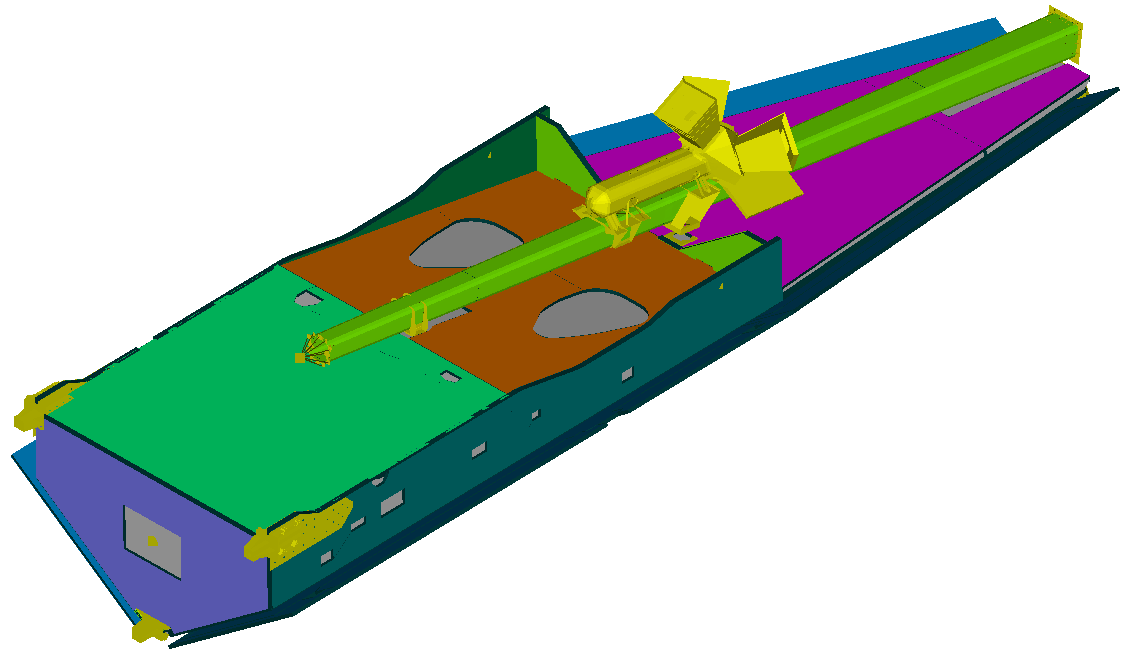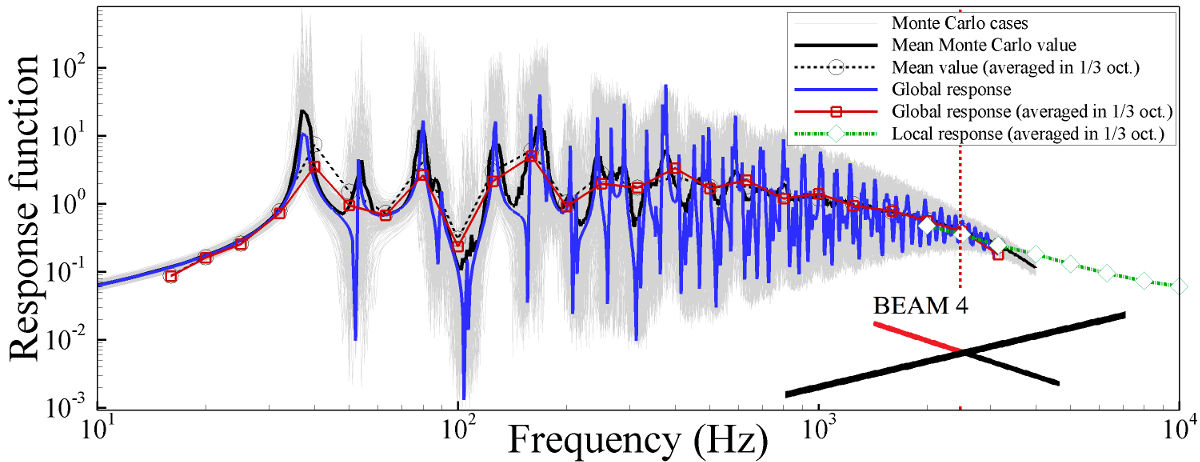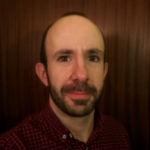
In brief:
- Simulation of air layers in vibro-acoustic problems and their interaction with external air.
- Hybrid models for structures with medium modal density.
- Reduced SEA models for structures with thin air layers and accesibility restriction.
- Modelling and control of the acoustic load on launchers.
Mi main research field is the vibro-acoustic response of structures. The strong coupling between the surrounding air and structures is a complex problem that needs an accurate modelling of both the structural and the fluid domains in a wide frequency range. Currently I work on three ranges of frequency focused in each one in a different goal.
In the low frequency range I have been working on the modelling of air layers since the beginning of my PhD. These air layers can modify noticeably the response of the system as for example for solar wings in folded configuration. The simulation of these air layers and its inclusion on current numerical models in the aerospace industry was the case study for my PhD. In this frequency range the characteristics of the acoustic load are also very important (in particular its diffusion) requiring to improve current numerical models for the acoustic loads.
 (Courtesy of Dutch Space)
(Courtesy of Dutch Space)
 (Fisher, JASS 2006)
(Fisher, JASS 2006)
The medium frequency range is characterised mainly by the medium modal density of the structures that can not be modelled adequately by finite elements due to increasing modal coupling. In the same way, applying high frequency (energetic) formulations as SEA requires a set of applicability criteria that are not fulfilled completely. There is not a formulation with an extended used or general implementation for this frequency range. To develop both structural and fluid formulations for this modal density range is one of my research areas currently developing a hybrid model for the structure and a coherent model for the fluid-structure interaction.
The vibro-acoustic problem in the high frequency range is usually analysed through energetic formulations being the most popular one the Statistical Energy Analysis. Determining the parameters of a SEA model for an actual structure is the main issue to obtain an accurate model. The increase of size and complexity of spacecraft structures has led to including elements with little or none accessibility. This makes the usual method to determine the system loss factors (the Power Injection Method) infeasible. Due to that my work is focused in developing a SEA formulation that allows to analyse problems without need to measure the response of all of their elements. This formulation is supplemented with new methods to determine the loss factors of the reduced model.


